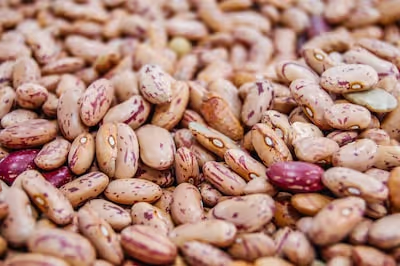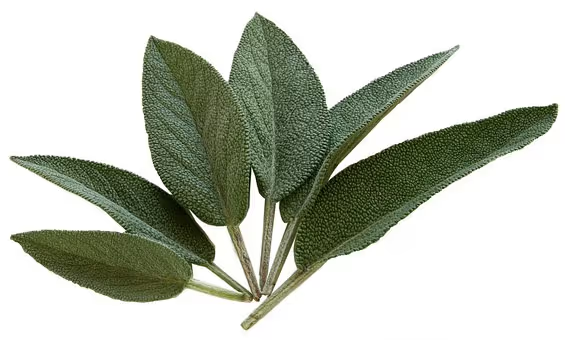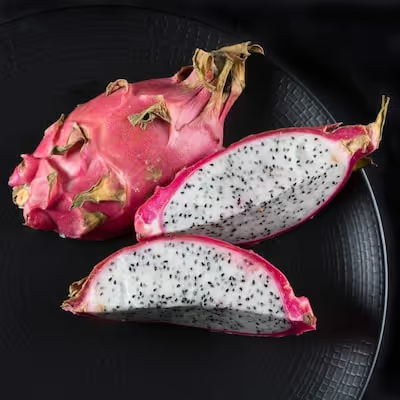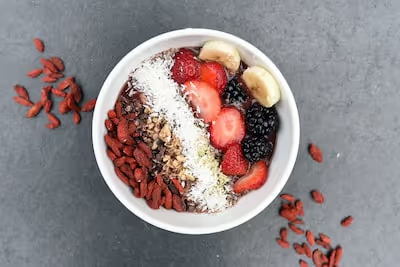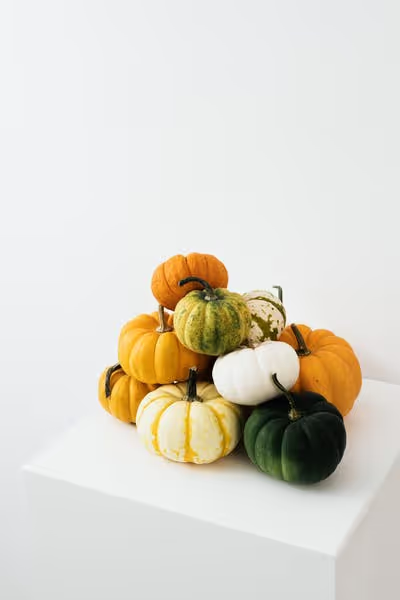Growing Edamame: How to Plant, Grow, and Harvest at Home
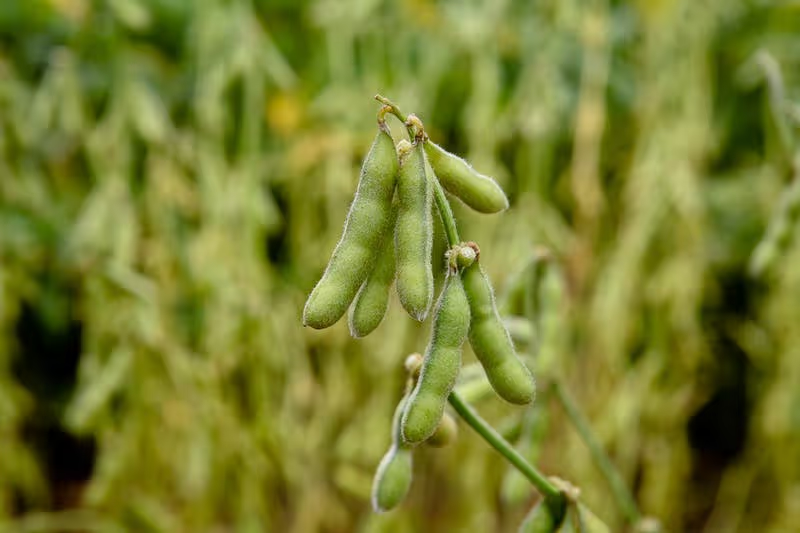
Growing Edamame
Growing edamame demands sun-drenched soil, steady warmth, and well-draining ground. Begin by planting edamame seeds directly outdoors once soil temperatures hover around 60°F; space them two inches apart in rows set roughly two feet apart. Keep beds consistently watered, ensuring at least an inch of moisture weekly, and within 10 weeks you'll be harvesting your own nutty, nutrient-rich pods. Hungry to learn more about cultivating this savory snack? Read on for simple, seasoned advice on growing edamame that tastes way better than store-bought.
Cheatsheet: Home Edamame Planting & Harvesting
🌱 Optimal Conditions
- Soil temp: 60–85°F (16–29°C)
- pH: 6.0–7.0
- Full sun (6+ hrs/day)
- Frost-free window: 70–90 days
🧰 Tools and Products You'll Need
- Edamame (soybean) seeds
- Compost or well-rotted manure
- Mulch (straw or leaf mold)
- Hand trowel
- Watering can or hose
- Sharp scissors or pruners (for harvest)
📅 Planting Timeline
- Direct sow after last frost
- Soak seeds 8 hrs for faster sprouting
- Spacing: 2" (5 cm) apart, 12–18" (30–45 cm) between rows
- Plant 1" (2.5 cm) deep
🌿 Growing Tasks
- Keep soil evenly moist
- Mulch to deter weeds, conserve water
- No fertilizer needed if soil rich
- Watch for aphids, slugs, rabbits
- Support tall plants if windy
✂️ Harvest Step-by-Step
- Harvest when pods are plump & bright green (70–90 days).
- Pick in early morning for crispness.
- Cut whole stems or snap off pods by hand.
🥗 Health & Nutrition
- 8g protein per ½ cup cooked
- Rich in fiber, folate, iron
- Fixes nitrogen, improves soil
- Boosts home food security
📦 Yield & Storage
- 5–8 lbs (2–3.5 kg) pods per 10 ft (3 m) row
- Blanch & freeze for year-round use
-
Growing Edamame: Site, Soil, and Timing
I start Growing Edamame only after the soil hits 60 F to 65 F (16 C to 18 C) and stays warm. The sweet spot for germination sits near 77 F (25 C), so a soil thermometer pays for itself.
Count on 70 to 95 days from sowing to the fresh pod stage. Soy is sensitive to day length, so choose varieties matched to your latitude or listed for your region’s growing zone.
University extension guides note edamame is harvested at the R6 stage when seeds fill about 80 to 90 percent of the pod cavity. Source: UMass Extension Vegetable Program.
Varieties That Deliver
I grow short-season picks in cooler zones and mid-season types where summers run long. Flavor and pod set beat brochure copy every time.
- Envy 70 to 75 days. Early, tidy plants, reliable in short summers.
- Chiba Green 75 to 85 days. Big pods, forgiving in variable weather.
- Midori Giant 80 to 90 days. Meaty beans with a buttery snap.
- Shirofumi 85 to 90 days. Classic taste, steady yields.
- Sayamusume 80 to 85 days. High pod count, great for freezing.
- Agate 75 to 85 days. Compact habit for beds and large containers.
For latitude 35 to 45 degrees, I lean on mid-group types often labeled for “Northern” or “Mid” maturity. Seed houses with edamame specialists tend to list honest days to maturity.
Seed, Inoculant, and Sowing
Edamame is a soybean, so I dust seed with Bradyrhizobium japonicum inoculant if the bed has not hosted soy in the last few years. Those bacteria build nodules that feed the plant.
Sow 1 to 1.5 inches deep (2.5 to 4 cm), 3 to 4 inches apart (8 to 10 cm), with rows 18 to 24 inches apart (45 to 60 cm). I plant in tight blocks for stronger stands and easier harvest.
Stagger plantings every 10 to 14 days for a rolling crop. I cover the first sowing with lightweight fabric to foil birds and early beetles.
Soil Prep and Fertility
Target pH 6.0 to 6.8 and well drained loam. I work in finished compost, then go easy on nitrogen so nodulation can do the heavy lifting.
A soil test keeps me honest on phosphorus and potassium. Too much nitrogen gives leaves, not pods.
Water, Heat, and Mulch
Consistent moisture counts most during flowering and pod fill. I aim for 1 inch of water per week (25 mm), and up to 1.5 inches (38 mm) in hot spells.
Straw or shredded leaf mulch holds soil moisture and keeps splash-borne disease low. Heat waves can stall pod set, so even watering and mulch steady the ship.
Sun, Airflow, and Spacing Tweaks
Full sun equals flavor. I give each row good airflow to dry leaves fast after rain.
If humidity lingers, I prune a few lower leaves on crowded plants. Cleaner canopies discourage blight.
Pests and Diseases
Soybean aphid, Japanese beetle, and Mexican bean beetle love tender soy. I scout twice weekly and act before numbers surge.
- Aphids: blast with water, follow with insecticidal soap, and invite lady beetles by keeping blooms nearby.
- Japanese beetle: morning handpicks into soapy water, row cover on young plantings, and trap placement far from the bed.
- Cutworms: collars at sowing or a shallow soil scrape at dusk to find the culprits.
- Slugs: iron phosphate baits and dry mulch borders.
Rotate out of legumes for 3 years to dodge soil disease. Avoid waterlogged soil to prevent root rots.
“Edamame is self-pollinating, so pollinator presence is a bonus for biodiversity, not a requirement for pod set.” Source: University extension soybean production notes.
Harvest Timing and Technique
Pods should be bright green, plump, and slightly fuzzy. If you can feel the beans pressing the seams, you are close.
I pull entire plants when 75 to 85 percent of pods are filled and strip pods in the shade. Waiting too long turns sugars starchy.
Expect the peak window to last 3 to 5 days per planting. I chill pods fast to lock flavor.
Postharvest: Cook, Chill, Freeze
For freezing, I boil pods in salted water for 3 minutes, then ice-bath until cold. Drain well before bagging.
Refrigerate fresh pods in a breathable bag for up to 3 days. After that, texture slips.
Cooked edamame provides about 11 g protein per 100 g. Source: USDA FoodData Central.
Container and Small-Space Growing Edamame
Use a 10 to 15 inch deep container (25 to 38 cm) with a high-drain mix. I plant 3 to 5 seeds in a 5 gallon pot (19 L) and thin to 3.
Keep pots in full sun and water more often than beds. Heat from patios dries mixes fast.
Companions and Bed Design
Interplant with sweet corn or summer herbs to attract beneficials. I skip crowding near sunflowers since shade creeps by midseason.
Leave room for harvest access. Nothing slows me down like a tight path when pods peak.
Common Problems and Fast Fixes
- Poor germination: soil too cold or seed too deep. Warm the bed and re-sow shallow.
- Lush leaves, few pods: excess nitrogen. Back off fertilizer next round.
- Pods flat or misshapen: drought during bloom or stink bug feeding. Water evenly and scout early evenings.
- Yellowing lower leaves late season: natural senescence. If early, consider inoculant use and soil test.
Are Edamame Seeds GMO?
Most garden edamame seed is non-GMO, sold as vegetable soy. Field soy in the U.S. is a different story.
“Herbicide-tolerant soybean varieties accounted for over 90 percent of U.S. acreage in recent years.” Source: USDA Economic Research Service, Adoption of Genetically Engineered Crops.
Buying Guide: What I Actually Use
- Fresh edamame seed from specialty vendors that list true days to maturity.
- Legume inoculant for soybean strains marked B. japonicum.
- Soil thermometer and moisture meter for consistent starts.
- Lightweight row cover and hoops for the first 3 weeks.
- Bypass snips, harvest tote, and a big stockpot for blanching day.
- Drip line or soaker hose to hit that 1 inch per week target.
Season Strategy and Succession
I sow once soil warms, then again 2 weeks later, and a third time if frost dates allow. The second sowing often hits the flavor bullseye.
Staggering spreads risk across weather swings. It also spreads the workload so harvest days feel calm.
Soil Health and Nitrogen Credits
After harvest, I cut plants at the soil line and leave roots to decay. Nodules return nitrogen to the system as they break down.
A winter cover crop of cereal rye or oats catches leftovers and feeds spring beds. The next crop thanks you.
Cooking Notes From the Garden Bench
Fresh pods taste like sweet corn kissed with cashew. I salt the boil like seawater, then finish with toasted sesame and lemon.
Overcooking muddies flavor. Two to three minutes usually hits that pop I crave.
Short-Season Alternatives
If frost crowds your calendar, grow snap beans, yardlong beans, or cowpeas. They shrug off heat and keep the protein theme alive.
In spring shoulder seasons, fava beans scratch the same itch. Young fava pods, grilled, carry a similar savor.
Field Notes and Sources I Trust
University extensions keep me grounded on timing, pests, and food safety. I cross-check variety notes with seed catalogs that trial in multiple regions.
“Harvest at R6, when seeds nearly fill the pod, for peak sweetness.” Source: Penn State Extension, Vegetable Soybean.
For broad stats and nutrition, USDA publications stay reliable. FAO and peer-reviewed agronomy texts help decode soy physiology in plain language.
Frequently Asked Questions about Growing Edamame
When is the ideal time to plant edamame seeds?
Edamame grows best when planted in late spring or early summer. Wait until the soil warms consistently above 60°F (16°C), typically around two weeks after your area's last frost date.
What type of soil is best for cultivating thriving edamame plants?
For optimal growth of edamame, select a fertile, well-draining soil with a pH between 6.0 and 6.8. Improve your planting site by incorporating organic compost to boost nutrient availability.
How deep and far apart should edamame seeds be planted?
Plant each edamame seed approximately 1 to 1½ inches (2.5 to 4 cm) deep and space seeds around 3 inches (7.5 cm) apart. After seedlings emerge, thin them to stand about 6 inches (15 cm) apart in rows spaced 18 to 24 inches (45 to 60 cm) apart for ideal growth conditions.
How much sunlight do edamame plants require?
Edamame plants prefer full sun conditions, requiring at least 6 to 8 hours of direct sunlight daily. Adequate sun exposure promotes strong stems and productive pod formation.
What watering schedule works best for edamame plants?
Provide consistent moisture by watering regularly to maintain slightly damp soil conditions. Aim for about 1 inch (2.5 cm) of water per week, adjusting based on rainfall amounts and soil moisture levels.
Should edamame plants receive fertilizer during growth?
Yes, apply a balanced organic fertilizer or well-rotted compost at planting time. A mid-season application of a nitrogen-rich fertilizer may also support healthy foliage and pod development.
When and how do I harvest edamame pods?
Harvest edamame pods when they are bright green, plump, and still tender, typically 65 to 85 days after planting. To harvest, gently pull or cut pods from the plant before they yellow, dry out, or fully mature.
Growing edamame at home doesn’t require a farm, just a patch of sun, decent soil, and a little patience. Give your seeds warmth, keep them watered, and watch those fuzzy pods swell with flavor. Harvest when the beans plump up—don’t wait too long or they’ll turn starchy. Fresh-picked edamame is a different animal from the frozen stuff at the supermarket; try it once and you’ll taste why. If you’re hooked on homegrown beans, you might also get a kick out of growing mung beans or lima beans. In the end, growing edamame is honest work—simple, rewarding, and always best shared at the table.
The Homesteader's Take on Growing Edamame
Maximizing Nutritional Self-Sufficiency
Edamame delivers approximately 17 grams protein per cooked cup (155 grams)—ideal for homesteaders seeking plant-based nutrition. Rich vitamins (K, C, folate) boost overall health and self-reliance.
Edamame as Animal Feed
Feed discarded pods, leaves, and stems safely to poultry, goats, rabbits, and pigs—provides fiber and nutrients, reducing feed costs sustainably.
Companion Planting Strategies
- Interplant with corn—edamame binds nitrogen, corn serves as natural trellis.
- Pair with cucumbers or squash—repels pests through diversity and improves soil vitality.
- Avoid garlic and onions—may inhibit growth and nitrogen fixation.
Preserving the Harvest
- Freeze Fresh: blanch pods 2–3 minutes, chill rapidly, freeze immediately. Keeps nutrients intact up to 8–12 months.
- Drying Beans: harvest mature pods, shell beans, dry thoroughly (sun or dehydrator at 130°F/54°C for 6–8 hours), store airtight for protein-rich winter food storage.
Seed Saving Tips
Select strongest plants for seeds, let pods mature fully, brown and dry. Store dried beans airtight, cool, and dry for planting next season—ensures consistent, self-sufficient crops year after year.
Find out which plants will thrive in your garden!
Answer a few fun questions and get custom plant recommendations perfect for your space. Let’s grow something amazing together!

start your season
